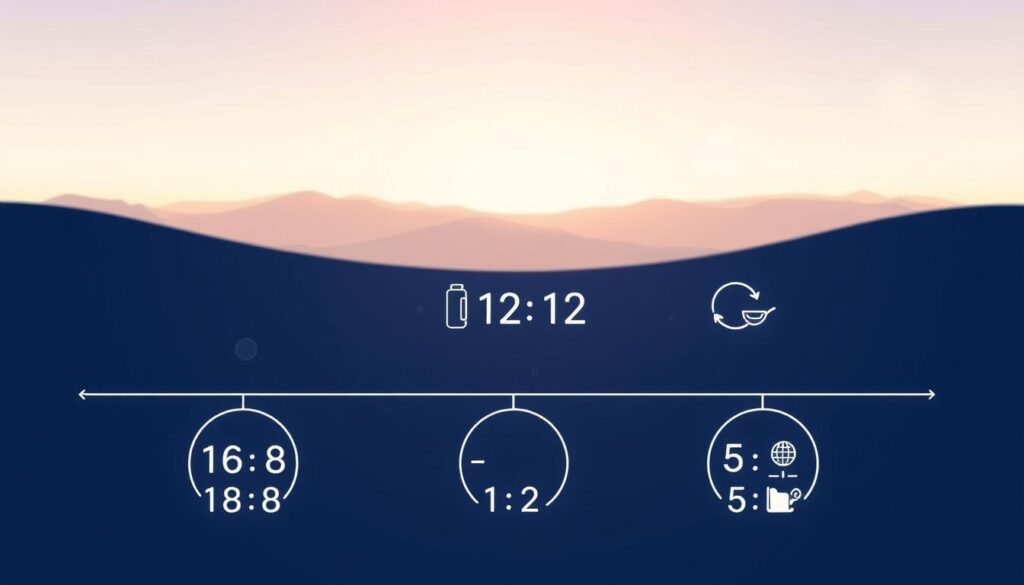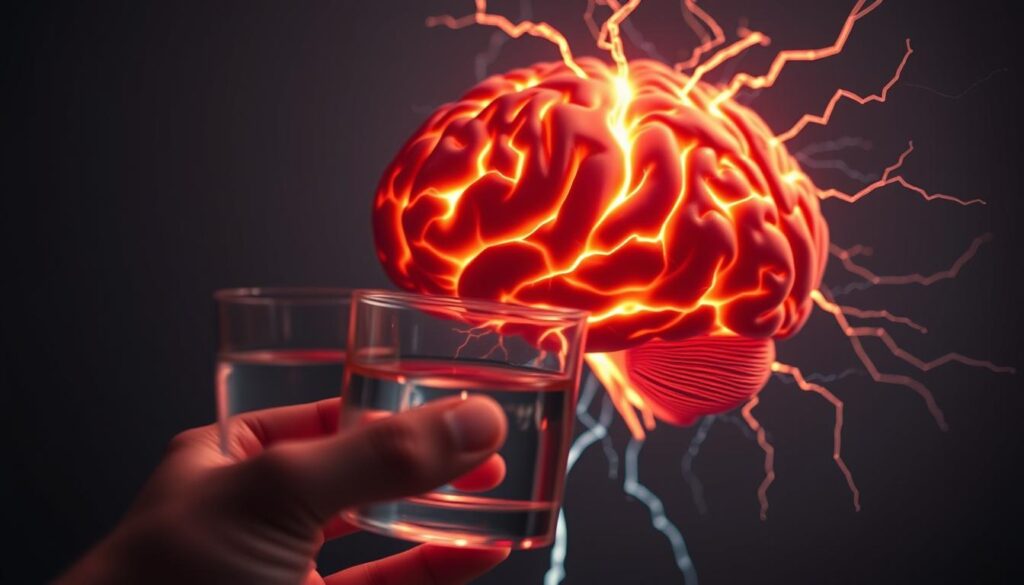Intermittent Fasting Tips for Newbies: A Beginner’s Guide
Unlock the benefits of time-restricted eating with this beginner’s guide to intermittent fasting, detailing easy steps to get started and what to expect.
Ever wondered if you can eat your favorite foods and reach your health goals? You're not alone. I felt lost in all the diet advice, unsure of what worked. Then, I found intermittent fasting tips for newbies and was so glad I did!
It's not just a diet; it's a lifestyle change. It brought me physical and mental clarity. If you're new, welcome! Let's see how intermittent fasting can make your life simpler.
Key Takeaways
- Intermittent fasting (IF) focuses on when you eat, not what.
- Popular IF methods include 16/8, Eat-Stop-Eat, and the 5:2 diet.
- Benefits include weight loss, better brain function, and heart health.
- IF can make your life easier by cutting down on meal prep.
- Choosing the right method and talking to a doctor is key.
What is Intermittent Fasting (IF)?
Ever wondered about intermittent fasting? It's a way to eat by fasting and then eating. It's different from regular diets because it focuses on when you eat, not what. This makes it great for those who like to choose their food freely.
Definition of Intermittent Fasting
Intermittent fasting means not eating for certain times and then eating. For example, in a 16/8 plan, you don't eat for 16 hours and then eat for 8 hours. It helps control when you eat to improve health and lose weight.
Historical Perspective
Want to know how to start intermittent fasting? Look at its history. Fasting has been around for thousands of years for health and spiritual reasons. Ancient Greeks like Socrates and religious groups like Muslims during Ramadan have fasted.
Today, science supports its benefits for energy and hormone balance. It's becoming more popular.
Popular Methods of Intermittent Fasting
Looking into intermittent fasting can be hard. But don't worry, I'm here to help. There are many methods to try, each with its own benefits. You can find one that matches your life and goals.
The 16/8 Method
The 16/8 intermittent fasting is very popular. You fast for 16 hours and eat for 8 hours. It's easy because you skip breakfast and eat from noon to 8 PM.

Eat-Stop-Eat
The Eat-stop-eat fasting is another good choice. You fast for 24 hours, once or twice a week. This means you stop eating from dinner one day to dinner the next.
It might seem hard at first, but many find it easy. It also helps you lose fat and keep your metabolism healthy.
The 5:2 Diet
The 5:2 intermittent fasting diet is flexible and easy. You eat normally for five days and then eat only 500-600 calories for two days. It's simple and helps you lose weight slowly.
Every method has its own benefits and challenges. But, with some trying, you'll find the right one for you. The most important thing is to be consistent and listen to your body. Are you ready to try it? 🤔
Health Benefits of Intermittent Fasting
Intermittent fasting (IF) is more than a trend. It offers many health benefits. Let's explore the health benefits of intermittent fasting in more detail.
Weight Loss and Fat Reduction
One big plus of IF is weight loss and fat reduction. It helps you eat less without feeling hungry. This way, you lose weight and grow muscle.
Who wouldn't want to lose weight and grow muscle?
Improved Insulin Resistance
IF also makes your body better at using insulin. This lowers blood sugar and fights type 2 diabetes. It's good for your health.
Brain Health and Cognitive Function

Yes, fasting boosts brain health! It makes your brain work better by creating new nerve cells. This can improve your memory and protect against diseases.
How to Start Intermittent Fasting Safely
Starting intermittent fasting can change your life. But, it's important to start in a way that's right for you. We'll look at how to start this journey safely and without hurting your health.
Choosing the Right Method
Not all fasting methods are the same. It's key to choose one that fits your life and health needs. Let's compare some popular methods to help you pick the best one.

| Method | Description | Suitability |
|---|---|---|
| 16/8 Method | Eat during an 8-hour window and fast for 16 hours. | Good for beginners who have consistent daily schedules. |
| Eat-Stop-Eat | Fast for a full 24 hours once or twice a week. | Ideal for those who can handle occasional prolonged fasting. |
| 5:2 Diet | Eat normally for five days, and reduce calorie intake significantly for two days. | Suitable for individuals who prefer flexibility in their eating patterns. |
Choosing the right fasting method is key to starting safely and effectively.
Consulting with a Healthcare Professional
Before starting, talk to a healthcare professional. They can make sure the method is right for you. They know your health history and can give advice tailored just for you.
Getting professional advice helps you start fasting safely and successfully.
Beginner's Guide to Intermittent Fasting
Starting intermittent fasting can be both exciting and daunting. Here's a simple guide to help you. First, pick a method that fits your lifestyle.
The 16/8 method is a good start if you're new. You fast for 16 hours and eat in an 8-hour window. For example, eat from noon to 8 PM.

My top tip is to ease into it. Don't be too hard on yourself if it takes time. Your body might need a few days to adjust.
Dealing with hunger pangs can be tough. Drinking water, black coffee, or herbal tea helps. Staying hydrated is very important!
- Start with easier fasting methods like the 12/12 or 14/10.
- Gradually increase your fasting window as you get comfortable.
- Plan your meals to be nutritious and filling to sustain your energy levels.
If you feel lightheaded or very tired, listen to your body. Adjust your eating window if needed. Remember, it's a journey and everyone's body is different.
This guide is here to help you on your intermittent fasting journey. Stay patient and consistent. You'll likely see positive changes in your body and mind.
What Happens to Your Body During Fasting?
If you're curious about intermittent fasting, you're probably eager to know how it impacts your body. Strap in—it's a fascinating ride. 💡

Impact on Cells and Hormones
Fasting does more than just help you shed pounds; it creates significant body changes during fasting at the cellular level as well. When you stop eating, your body starts to produce less insulin. This helps balance your blood sugar.
It's like hitting a reset button. Plus, levels of human growth hormone (HGH) skyrocket, sometimes increasing as much as fivefold. This hormone helps preserve muscle mass and jumpstarts fat burning. Not bad for skipping a few meals! 🥗
Metabolic Changes
As your body shifts from consuming glucose to burning fat, numerous fasting metabolic effects come into play. Your liver begins to produce ketones. These act as a powerful energy source for your brain.
Also, fasting triggers autophagy, a cellular repair process. It removes damaged cells and regenerates new ones. The net result? Enhanced fasting impact on hormones and a more efficient metabolism.
Common Challenges and How to Overcome Them
Starting intermittent fasting (IF) can be tough at first. But don't worry! 😌 It's all part of the journey. And it can lead to amazing benefits.
Dealing with Hunger Pangs
Handling hunger while fasting can be hard. Here's how to tackle it:
- Stay Hydrated: Drinking water helps suppress hunger and keeps you feeling full.
- Eat Nutrient-Dense Foods: During your eating windows, focus on meals high in protein, fiber, and healthy fats to keep you satisfied longer.
- Keep Busy: Distraction can help reduce the focus on hunger. Engage in hobbies or tasks to keep your mind off food.
Managing Energy Levels
Managing energy during IF is another challenge. Here's how to do it:
- Start Slow: Gradually increase your fasting period. Begin with shorter fasts and extend them as your body adjusts.
- Proper Nutrition: Ensure your meals are balanced with carbs, proteins, and fats to keep energy levels stable.
- Sleep Well: Adequate rest is key. A good night's sleep can significantly improve your energy levels.
- Stay Active: Light exercises like walking can boost energy and improve mood without demanding too much from your body.
Remember, everyone's experience with IF is unique. The key lies in listening to your body and making adjustments as you go. You've got this! 💪
Who Should Avoid Intermittent Fasting?
Intermittent fasting is great for many, but not everyone. It's important to think about health conditions and personal situations before starting.
Some medical conditions make fasting risky. For example, people with diabetes need to watch their blood sugar closely. Fasting can cause big changes in blood sugar levels.
Those with a history of eating disorders should also stay away. Fasting can lead to unhealthy eating habits.
Health Conditions to Consider
Some health issues need special attention. Pregnant or breastfeeding women must make sure they and their babies get enough nutrients. Fasting can affect how well some medicines work.
People with long-term illnesses, like heart disease, should talk to their doctor first. This is to keep their health safe and avoid bad side effects.
Age and Gender Considerations
Age and gender matter too. Teenagers need steady food for growth. Women of childbearing age might see changes in their periods from fasting. So, they should fast with a doctor's watch.
Older adults might find fasting hard because of energy and nutrient issues. Always think about the good and bad and listen to your body.
Myths and Misconceptions About Intermittent Fasting
Intermittent fasting (IF) has many myths that might stop people from trying it. Let's debunk these IF myths and share the truth about intermittent fasting.
Myth: Fasting Causes Major Muscle Loss
Many think fasting means losing a lot of muscle. But science says it's not true. Short-term fasting helps keep your muscles strong.
Fasting boosts growth hormone levels. This can even help grow muscle when you're eating less. So, fasting can help keep your muscles safe.
Myth: Skipping Breakfast is Unhealthy
Some believe skipping breakfast harms your metabolism. But, new studies show this isn't true. Skipping breakfast can actually be good for you.
It lets your body use fat for energy instead of carbs. This can help you lose weight without the old myths' problems. For more on these myths, check out this guide.
Safety Tips for Intermittent Fasting
When you start intermittent fasting, remember a few important tips. Knowing what your body needs helps you fast safely and healthily.
Staying Hydrated
Drinking lots of water is key when fasting. Water and zero-calorie drinks help with hunger and keep you healthy. A hydrated body works better and makes fasting easier.
Listening to Your Body
It's important to listen to your body's signs. If you get headaches, nausea, or feel anxious, talk to a doctor. They can help adjust your fasting to keep you healthy.
So, drink water, pay attention to your body, and be ready to make changes. These steps help you fast safely and healthily. Start your fasting journey with these tips!
Eat Stop Eat
Ever wondered if there's a simple way to add fasting to your busy life? Let me introduce the Eat-Stop-Eat method. It was created by Brad Pilon. This method means fasting for 24 hours, once or twice a week. It's a simple way to manage your diet.
So, how does the Eat-Stop-Eat method fit into fasting? It's all about being flexible. Unlike some intermittent fasting variations that need daily effort, this method lets you eat and fast in structured periods. This can be easier to stick to.
Some key benefits of the Eat-Stop-Eat method include:
- It helps cut calories without counting them every day.
- It boosts growth hormone levels, helping with weight loss and muscle.
- It might also improve your metabolic health, making it a top choice among fasting methods detailed.
This method is special because it's simple and easy to add to your life. Imagine only fasting for one or two days a week. No daily juggling needed.
Conclusion
This guide on intermittent fasting (IF) shows it can really help your health. We looked at different ways to fast, like the 16/8 and 5:2 diets. Each method works for different people.
It's important to remember that IF isn't for everyone. It can help with weight loss and brain health. But, it works best if you're healthy and consistent.
First, you need to pick the right fasting method. It should fit your life and what your body tells you. It's okay to feel hungry or tired at first. Getting used to it takes time and patience.
We also talked about who should not try IF. It's not good for everyone, like those with certain health issues. Always check with a doctor before starting.
Stay hydrated and make sure fasting fits your health goals. This guide wants to help you live healthier. It's all about being mindful and making smart choices.


